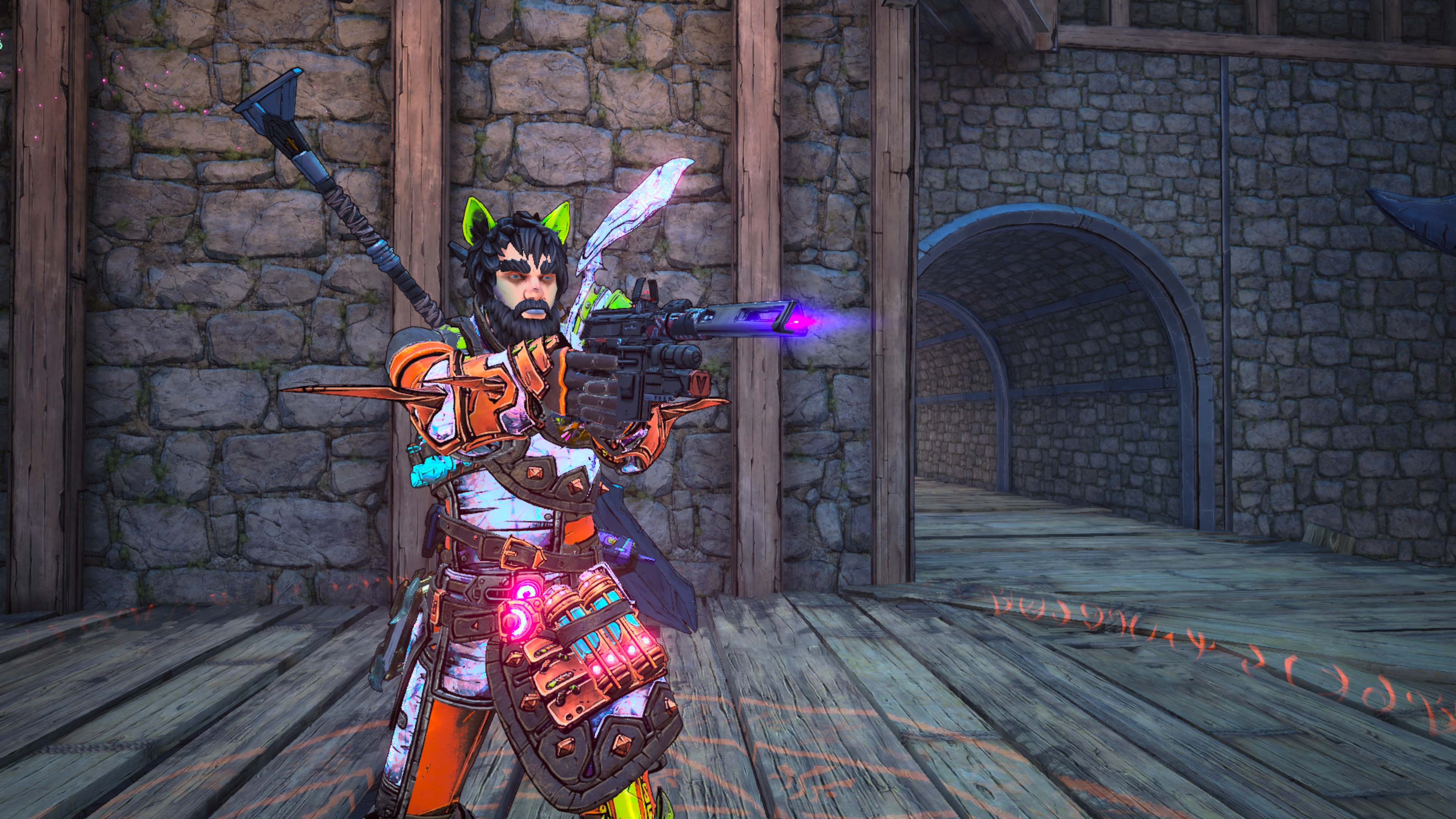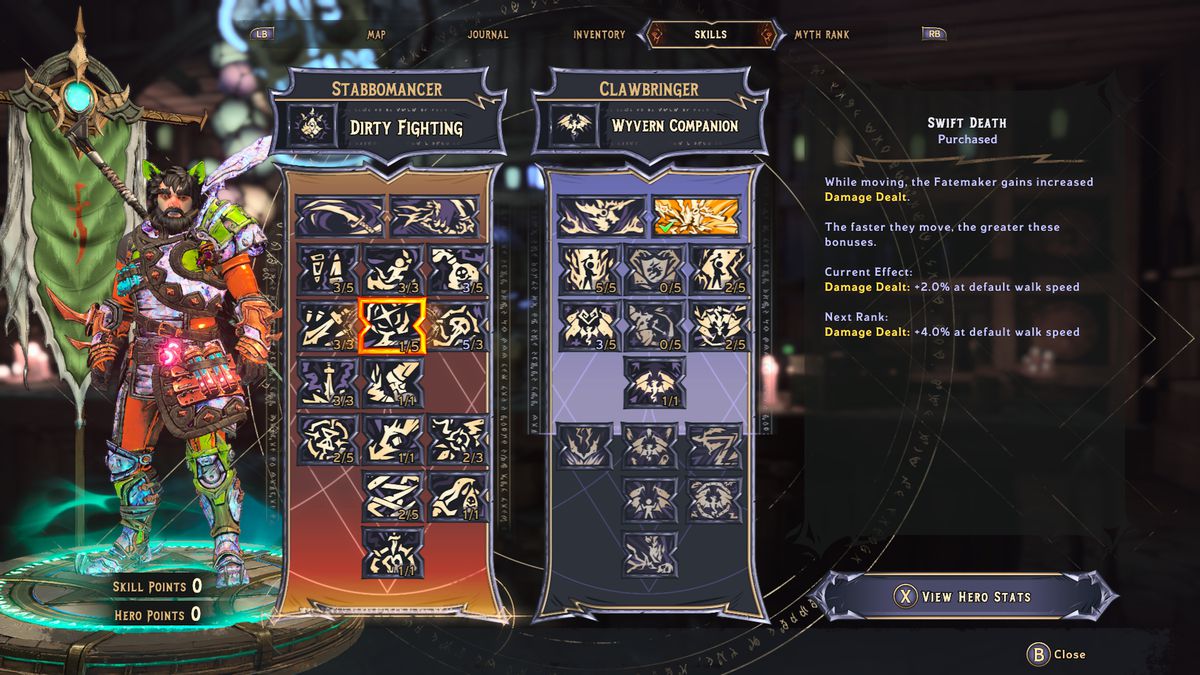Tiny Tina’s Wonderlands’ classes basically let you make John Wick

There’s a moment in any good action-RPG where things start to click. It’s when numbers, percentages and colored loot all come together to form a strategy. It is clear what you are expected to do and how you can fulfill those expectations. In Tiny Tina’s Wonderlands, I arrived at that moment when I realized I could role-play as John Wick.
Gearbox Software has just released their newest game. It combines Borderlands’ “guns meet Diablo” strategy with the flexibility and storytelling of a tabletop role playing game. It is an explosion of narrative right turns and explosions. There are also plenty of systemic nods to classic TTRPGs, two of which — dual classing and melee weapons — upended my longstanding Borderlands habits.
As is the case with most action-RPGs, you begin Wonderlands by selecting a character class. The Spellshot is a spellcaster who focuses on magic curses and guns, and can end a firefight within seconds. The Graveborn, along with their demi-lich friend, sacrifice their health in order to use powerful dark magic attacks. Then there’s the Spore Warden, a long-range hunter class who can summon icy tornadoes while their bipedal mushroom friend poisons foes up close.
Although I never planned it this way, I’ve built almost identical characters in every previous Borderlands game. I preferred long-range summoners who could keep their distance while calling friends in to help. These abilities were in perfect sync with my ability to maneuver firefights: I was able to summon a rocket-firing Turret to cover one side and hop between the points of cover on each other.
I assumed Wonderlands‘ firefights would unfold just like those in its numbered predecessors, so I chose the Spore Warden for my first foray. I could keep my distance as usual, with a host of elemental attacks to tie up my enemies while I picked them off with sniper rifles, assault rifles, and rocket launchers.
The thing is that Wonderlands doesn’t feel like any Borderlands game. Its early chapters are awash in melee-minded opponents, whose ranged companions hop between cover too frequently to be effectively flanked. My underpowered mushroom ally was unable to help me as I was constantly surrounded and overwhelmed by squads. What’s more, by Level 12, I hadn’t spent any of my skill points on melee upgrades. I went into Borderlands’ signature “Fight For Your Life” mode in almost every encounter.
Clearly, my old habits weren’t working!

Image: Gearbox Software/2K Games via Polygon
I restarted and respec’d. This time, I ran counter to my old preferences: I chose the Stabbomancer, a rogue whose focus on melee attacks and critical-hit chance reminded me of Brick, Krieg, and Zer0 — characters whose close-quarters play styles had pushed me away in the past games. Regardless, playing the Stabbomancer would be my attempt to meet Wonderlands halfway.
It was a total blast. I still am. The Stabbomancer’s ability to vanish into thin air before shooting enemies up-close does wonders for my survivability, and their bevy of critical-hit upgrades can make them into a one-shot machine. They’re also a perfect conduit for Wonderlands‘ renewed emphasis on melee combat. Wonderlands adds a melee weapon slot to replace the generic pistol-whip animations used in Borderlands. It means that I have the ability to equip myself with 4 guns and a mace or longsword or a khopesh. It’s the same excitement I get when I discover a Legendary shotgun, as it is whenever I am able to summon a poison-spewing Hydra and restore my health with every hit.
By the time I got to choose my secondary class, I knew exactly what I wanted: The Clawbringer. They added magic to my close-quarters weapons; they gave me lightning with every swing of the sword. Their wyvern companion was able to harass my enemies while I went in for the kill.
By Level 20, I was sprinting around firefights with the agility of a 49-year-old Keanu Reeves, shooting and punching and maiming whatever happened to be in front of me. I still use sniper rifles, grenade launchers, or whatever weapon the occasion calls for — John Wick used a book, after all — but I largely stick to pistols and submachine guns. Their mobility and handling make it easy to aim down sights at a moment’s notice, or fire off a few hip shots when an enemy surprises me from behind. The video above is me embracing my role as a fantastical John Wick in a mid-game shootout with a squad of skeletons.
I’m always impressed when a developer can shake up a series in its supposed twilight years. Hitman 3 is my favorite in IO’s stealth/comedy trilogy because of how often it throws level-design curveballs. Metroid Dread is remarkable in how it brings back the tension and fear of one our most beloved franchises. And I consider Halo: Reach, Bungie’s farewell to the iconic series, to also be the series’ magnum opus.
Tiny Tina’s Wonderlands may not completely reinvent the Borderlands wheel. It does, however, reinvigorate some aspects of the combat. It alters the foundational rhythm of the action-RPG franchise so well that I questioned — and ultimately eschewed — my 13-year-old habits. Now, I think I am the Baba Yag.
Source: www.polygon.com